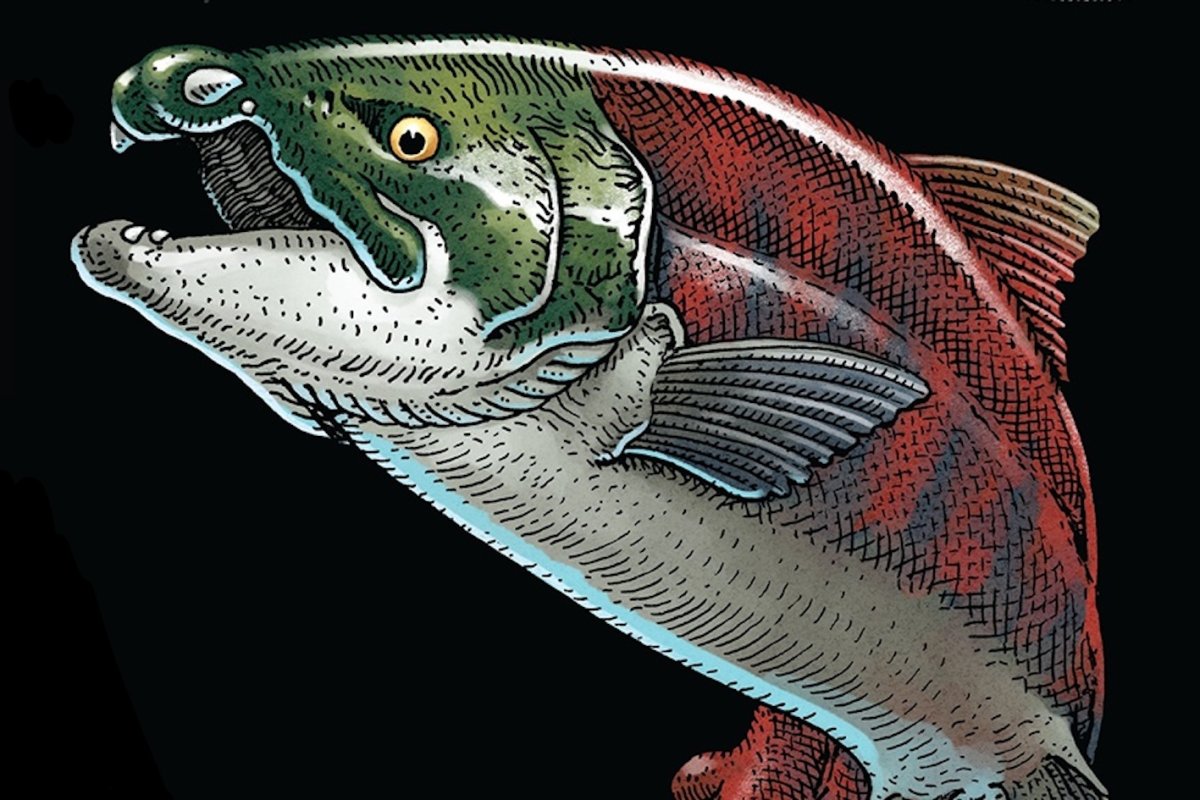A giant prehistoric salmon had large tusk-like spikes protruding out of its snout that could have "easily" killed a shark or other large marine animals, the lead author of a study told Newsweek.
The exact purpose of the spikes, which are actually oversized front teeth, is somewhat unclear although one hypothesis proposed in the study, published in the journal PLOS ONE, suggests that they were used as a weapon to fight competitors or predators.
The salmon species in question, known scientifically as Oncorhynchus rastrosus or Smilodonichthys rastrosus, lived in the waters of the North Pacific a few million years ago along the coast of North America and Japan. It went extinct around roughly five million years ago.
The fish, which is thought to have reached immense sizes of almost 9 feet in length, was first described in the 1970s. Its size makes it the largest member of the Salmonidae family—which includes salmon, trout and other related fish—ever discovered.

"We suspect that these salmon lived a similar life to modern Pacific salmon—spending most of their lives in the open ocean and returning to freshwater rivers to spawn upstream," Kerin Claeson, the study's lead author and professor of anatomy at Philadelphia College of Osteopathic Medicine, told Newsweek.
Initially, researchers thought that its oversized front teeth pointed backward into the mouth like fangs, leading it to be named the "saber-toothed salmon," or Smilodonichthys rastrosus. But this conclusion was based, in large part, on fossils of the teeth that were found apart from the rest of the skull.
In recent years, however, a new picture of this prehistoric salmon has emerged—one in which the front teeth point sideways out of the mouth, much like the tusks of a warthog. The latest study, which is based on CT scans of fossils and analysis of newly collected remains over the past years, supports this view and suggests that the fish should now be referred to as the "spike-toothed salmon."
"No other living (or extinct) salmon possesses teeth with such an unusual orientation," Claeson said.
The spikes may have been used for fighting—either against other spiked-toothed salmon or to defend against predators—or as a tool to aid in nest construction. The study suggests that the spikes may have been multifunctional and used for both purposes.
"Coupled with their massive body muscles, they would have been able to produce incredible strength [through] those spikes," Claeson said. "Imagine a one-pound geologist's hammer, sharpened, and wielded by 200 pounds of lateral muscle. Such spikes, wielded with such force, could have easily killed, or injured a shark, dolphin, sea lion, or rival spike-toothed salmon."
"Discoveries like ours show they probably weren't gentle giants," Claeson said in a press release.
It is not thought that the spikes were used for catching prey because the fish appear to have been filter feeders. While their lives likely resembled those of modern Pacific salmon with regards to where they spent their time, this filter-feeding trait is one example of a difference between the two fish.
"The behavior of these [prehistoric] fish would have naturally been different than modern Pacific salmon, as evidenced by not only their spikes but also their lack of any other substantial teeth. Instead of grasping, slicing, or chewing like very toothy fish, these were filter feeders," Claeson told Newsweek.
According to the researcher, filter-feeding could help explain why these prehistoric fish were so big. After all, many whales filter-feed, too, and they are some of the largest marine animals.
Do you have an animal or nature story to share with Newsweek? Do you have a question about paleontology? Let us know via science@newsweek.com.
Uncommon Knowledge
Newsweek is committed to challenging conventional wisdom and finding connections in the search for common ground.
Newsweek is committed to challenging conventional wisdom and finding connections in the search for common ground.
About the writer
Aristos is a Newsweek science reporter with the London, U.K., bureau. He reports on science and health topics, including; animal, ... Read more
To read how Newsweek uses AI as a newsroom tool, Click here.








